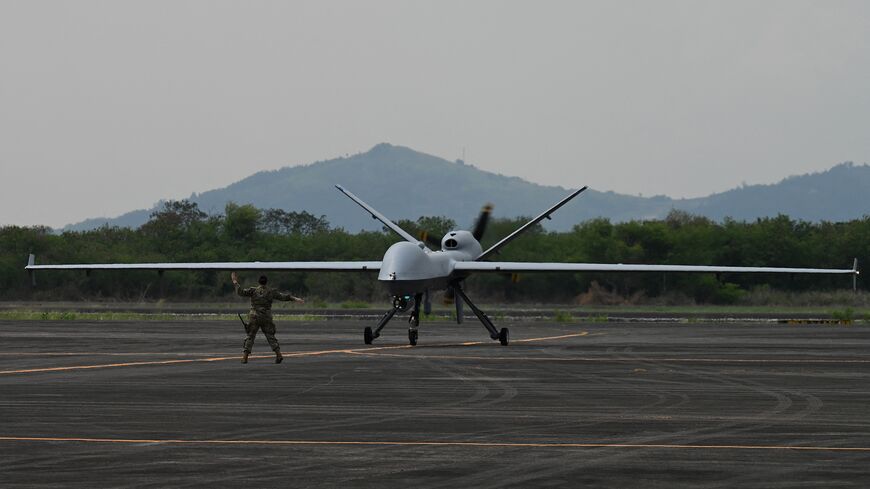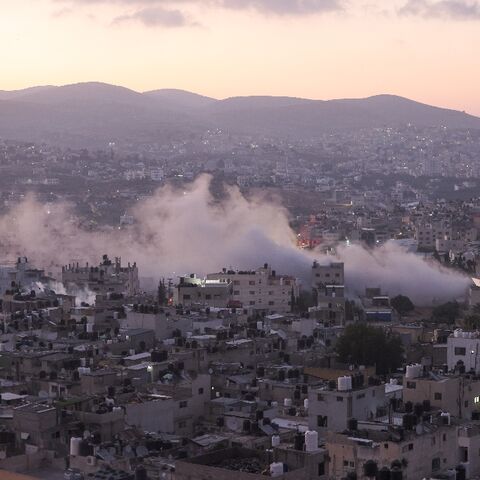WASHINGTON — For the second time in less than 24 hours, Russian fighter jets maneuvered dangerously close to US MQ-9 Reaper drones over Syria on Thursday in what Pentagon officials described as the latest cases of deliberate harassment by the Kremlin’s forces there.
In an apparently separate incident on Thursday, the French military said a Russian Su-35 engaged in an "unprofessional interaction" with two Rafale fighter jets over the Iraq-Syria border area, forcing the French pilots to maneuver in order to avoid risk of an accident.
"The repeated violations, [by] Russian air forces, of agreed-upon standards and practices is now becoming a significant safety concern in the region," the US military's top commander in the Middle East, Army Gen. Michael "Erik" Kurilla, said in a statement on Thursday.
The US Air Force released separate videos of the close encounters captured by the MQ-9s' cameras in which Russian aircraft appear to drop flares within close range of the drones.
In a statement on Thursday, the Air Force said Russian Su-34 and Su-35 pilots flew dangerously close to US MQ-9s around 9:30 a.m. local time on Thursday morning, forcing the US pilots to perform evasive maneuvers.
A prior close encounter occurred Wednesday around 10:40 a.m. as three US MQ-9s were “conducting a mission against [Islamic State] targets," the Air Force’s top commander in the Middle East, Lt. Gen. Alexus Grynkewich, said in a statement.
“Against established norms and protocols, the Russian jets dropped multiple parachute flares in front of the drones, forcing our aircraft to conduct evasive maneuvers," Grynkewich said.
The statement went on, “Additionally, one Russian pilot positioned their aircraft in front of an MQ-9 and engaged afterburner, thereby reducing the operator’s ability to safely operate the aircraft.
"We urge Russian forces in Syria to cease this reckless behavior and adhere to the standards of behavior expected of a professional air force so we can resume our focus on the enduring defeat of ISIS.”
3 Russian fighter jets harassed US drones over Syria, US Air Force says
— International Defence Analysis (@Defence_IDA) July 6, 2023
The jets dropped flares and flew in front of the drones, forcing them to take evasive action. The US military called the incident "unsafe and unprofessional."#Russia #Syria #Drones #USMilitary pic.twitter.com/0eU3IvOS3r
Why it matters: The Su-35's run-in with the French Rafales suggests the Kremlin is upping the ante after the Pentagon sent stealth F-22s to the region in a bid to fend off intimidation tactics by Russian pilots.
The Russian military announced joint Russian-Syrian exercises – involving aviation, air defense and electronic warfare drills – would begin Wednesday and last until early next week.
Russia's state-run TASS News Agency quoted Rear Adm. Oleg Gurinov as alleging US drones had repeatedly violated the airspace over the drills yesterday in northern Syria, without citing evidence.
But US military officials say there's nothing new about what Russian pilots are doing.
"To suggest that somehow, you know, this is our fault, is ridiculous," Pentagon Press Secretary Brig. Gen. Pat Ryder told reporters on Thursday.
The videos released by the US Air Force are the first depicting the aggressive maneuvers by Russian pilots over Syria since CENTCOM officials began raising the alarm over such incidents early this year.
There are roughly 900 American troops in Syria, part of a predominately US-led multinational coalition that supports local fighters in tracking down the remnants of Islamic State networks. American troops, who US officials say are only there to fight IS, share a crowded battlefield with Russian, Syrian and Iranian forces who support the government of Syrian President Bashar al-Assad.
Over the past several months, Russian pilots have flown weapons-laden aircraft over US bases in Syria almost daily, American military officials have said, in maneuvers that violate safety protocols which were previously agreed upon between Russian and US commanders.
In March, Kurilla, the top commander of US forces in the Middle East, alerted Congressional lawmakers about a spike in the frequency of such incidents.
Grynkewich later told NBC News that Russian pilots had flown over the US Al-Tanf garrison on Syria’s southern border with Iraq and Jordan some 25 times in the first three weeks of that month.
Ukraine spillover: Russian pilots have periodically violated US-controlled airspace over Syria over the past several years, but it's not entirely clear why they've been ramping up the pressure in recent months.
Officials at CENTCOM’s Air Force headquarters first noticed the current trend around the time of Russia’s invasion of Ukraine in February 2022, one military official at told Al-Monitor last month.
Grynkewich and other US military officials told Al-Monitor earlier this year they suspected that Russian harassment could be in part a favor to Iran, whose steady supply of armed drones has helped the Russian military bombard Ukraine.
Iran-backed forces in Syria and Iraq are long thought to have coveted the border crossing between the two countries on the Baghdad-Damascus highway, where the US Al-Tanf base sits surrounded by a no-fly zone with a 55-kilometer (34-mile) radius.
A classified Pentagon document leaked online and reported by the Washington Post last month revealed that Russian, Iranian and Syrian military and intelligence officials held a meeting in November 2022 in which they agreed to establish a coordination center to direct a campaign of covert pressure on the US footprint in Syria, including stoking protests and attacks on American forces.
A US military official told Al-Monitor last month that the so-called de-confliction channel — a phone line between US and Russian commanders designed to reduce the risk of violent confrontation between their forces in Syria — remains active.
Know more: Last month the Pentagon dispatched high-value US F-22 Raptors — the United States’ most advanced fighter jet — to Jordan to ward off Russian planes over Syria, but military officials don't expect their deployment to be long-term.
Editor's note: This story has been edited for clarity and updated to include information about a second incident between Russian aircraft and US drones over Syria on July 6, as well as an interaction between a Russian Su-35 and French Rafale aircraft.








